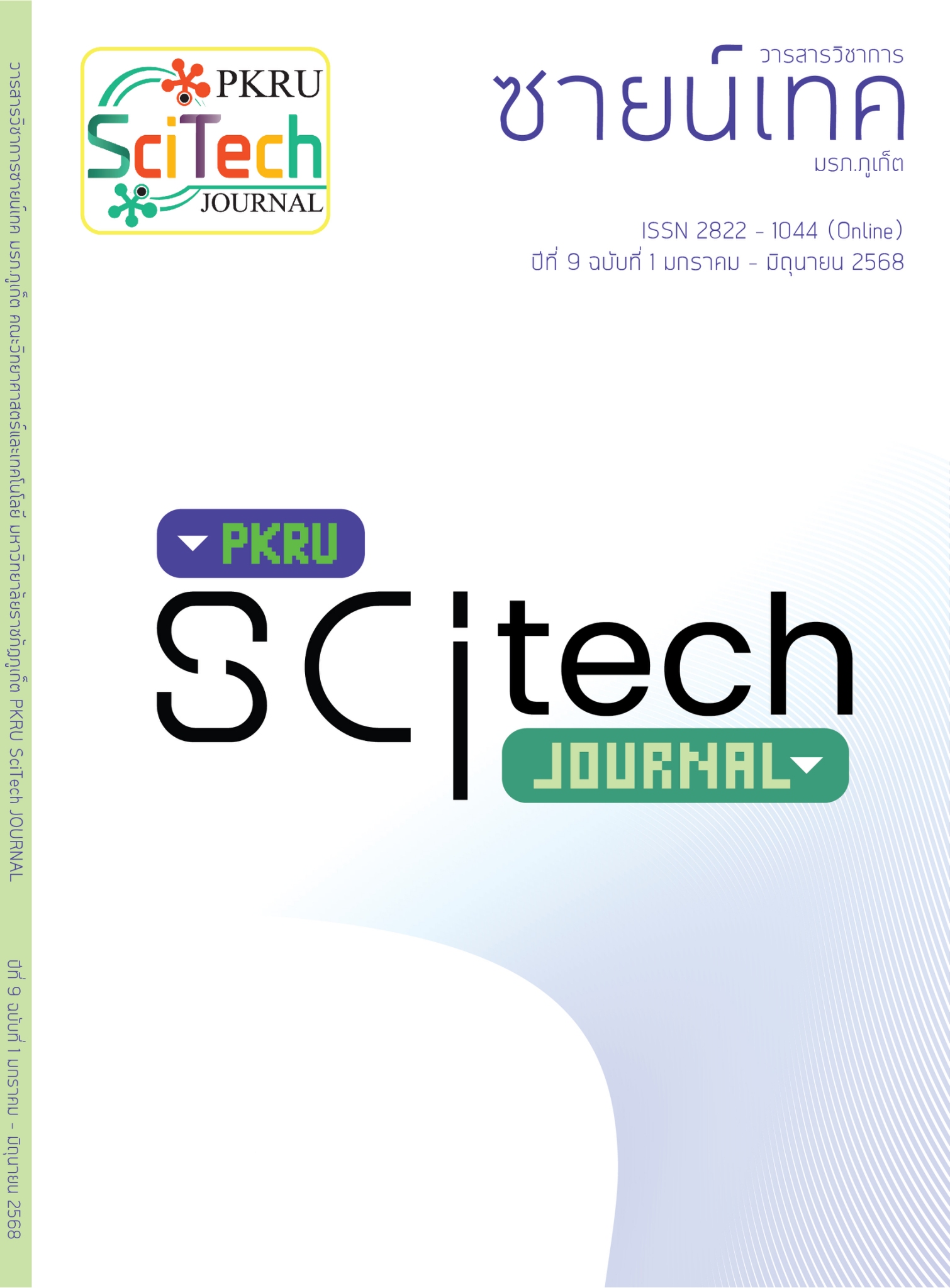The Development of a Ventilator Counting System Based on the Internet of Things for Hospitals
Main Article Content
Abstract
The research focused on developing a counting system for spare ventilators in the emergency room of a hospital in Bangkok using Internet of Things (IoT) technology. The system aimed to prevent ventilator shortages during emergencies and reduce the workload of staff who would otherwise need to manually check the ventilator count. It was designed to count ventilators using object-detection infrared sensors and transmit the data via Wi-Fi, which was then displayed on a webpage. Hospital staff could continuously monitor the remaining number of ventilators, and a notification system via the Line application alerted them when the number of ventilators dropped below a set threshold. This allowed staff to promptly replenish ventilators as needed. The test results demonstrated that the sensors detected ventilators with 97% accuracy, while the alert system performed with 100% accuracy. For future development, improvements are expected in the aesthetic presentation of the website and the connectivity of devices in areas without wireless internet access.
Article Details

This work is licensed under a Creative Commons Attribution-NonCommercial-NoDerivatives 4.0 International License.
- The original content that appears in this journal is the responsibility of the author excluding any typographical errors.
- The copyright of manuscripts that published in PKRU SciTech Journal is owned by PKRU SciTech Journal.
References
(1) Gholamhosseini, L., Sadoughi, F., & Safaei, A. (2019). Hospital real-time location system (a practical approach in healthcare): A narrative review article. Iranian Journal of Public Health, 48(4), 593–602.
(2) Uslu, B. C., Okay, E., & Dursun, E. (2020). Analysis of factors affecting IoT-based smart hospital design. Journal of Cloud Computing: Advances, Systems and Applications, 9(1), 1–23.
(3) Lampropoulos, G., Siakas, K., & Anastasiadis, T. (2019). Internet of Things in the context of industry 4.0: An overview. International Journal of Entrepreneurial Knowledge, 7(1), 4–19.
(4) จุฬาวลี มณีเลิศ, พิรุฬห์ แก้วฟุ้งรังษี, ประธาน คำจินะ, และพรวนา รัตนชูโชค. (2567). การพัฒนาเครื่องตรวจวัดความชื้นและอุณหภูมิเมล็ดกาแฟด้วยเทคโนโลยีอินเทอร์เน็ตทุกสรรพสิ่ง. วารสารวิชาการซายน์เทค มรภ.ภูเก็ต, 8(2), 24–38.
(5) สุวิทย์ ภูมิฤทธิกุล, และปานวิทย์ ธุวะนุติ. (2559). Internet of Thing เพื่อการเฝ้าระวังและเตือนภัยต่อสุขภาพของมนุษย์และการวิเคราะห์ข้อมูลที่ได้โดยใช้โปรแกรม Hadoop. วารสารวิชาการปทุมวัน, 6(15), 61–72.
(6) กรวัฒน์ ไตรวัย, ขจร ฝ้ายเทศ, และวราพรรณ อภิศุภะโชค. (2566). ปัจจัยที่มีผลต่อการยอมรับนวัตกรรมบริการทางการแพทย์ผ่านระบบอินเทอร์เน็ตของบุคลากรทางการแพทย์ในโรงพยาบาลส่งเสริมสุขภาพตำบล. วารสารมหาจุฬานาครทรรศน์, 10(4), 198–211.
(7) Hong, Y. R., Lawrence, J., Williams, D., Jr., & Mainous, I. A. (2020). Population-level interest and telehealth capacity of US hospitals in response to COVID-19: Cross-sectional analysis of Google search and national hospital survey data. JMIR Public Health and Surveillance, 6(2), 1–8.
(8) Abdulmalek, S., Nasir, A., Jabbar, W. A., Almuhaya, M. A. M., Bairagi, A. K., Khan, M. A., & Kee, S. H. (2022). IoT-based healthcare-monitoring system towards improving quality of life: A review. Healthcare, 10(10), 1–32.
(9) ลัดดาวัลย์ ทองเกลี้ยง. (2564). ผลการพัฒนาสมรรถนะของพยาบาลวิชาชีพยุค 4.0 ในการดูแลผู้ป่วยใช้เครื่องช่วยหายใจชนิดควบคุมด้วยปริมาตร หอผู้ป่วยไอซียูอายุรกรรม 4 โรงพยาบาลสุราษฎร์ธานี. วารสารวิจัยและนวัตกรรมทางสุขภาพ, 4(2), 54–64.
(10) Saleh, N., & Salem, A. R. (2017). An automated medical equipment management system proposed for small-scale hospitals. Journal of Clinical Engineering, 42(4), 1–8.
(11) Bhan, R. K., & Dhar, V. (2019). Recent infrared detector technologies, applications, trends and development of HgCdTe based cooled infrared focal plane arrays and their characterization. Opto-Electronics Review, 27(2), 174–193.
(12) กรกนก สาระนัน, และนันทิยา ชัยบุตร. (2563). การตรวจจับและแจ้งเตือนอัตโนมัติของการล้มในห้องน้ำโดยเซนเซอร์อินฟราเรด. วิศวกรรมสาร มหาวิทยาลัยนเรศวร, 15(1), 45–53.
(13) นิรมล เรืองพยุงศักดิ์. (2557). การติดตามเส้นทางการเคลื่อนที่ของวัตถุบนระนาบด้วยกล้องและเซนเซอร์อินฟราเรด. วารสารวิชาการพระจอมเกล้าพระนครเหนือ, 24(2), 247–256.
(14) Kumar, A., Dhanagopal, R., Albreem, M. A., & Le, D.-N. (2021). A comprehensive study on the role of advanced technologies in 5G based smart hospital. Alexandria Engineering Journal, 60(6), 5527–5536.
(15) Mariza, W. (2022). Prototype smart home dengan NodeMCU ESP8266 berbasis IoT. Jurnal Ilmiah Teknik, 1(2), 101–107.
(16) Parida, D., Behera, A., Naik, J. K., Pattanaik, S., & Nanda, R. S. (2019). Real-time environment monitoring system using ESP8266 and ThingSpeak on Internet of Things platform. In International Conference on Intelligent Computing and Control Systems (ICCS), 225–229.


